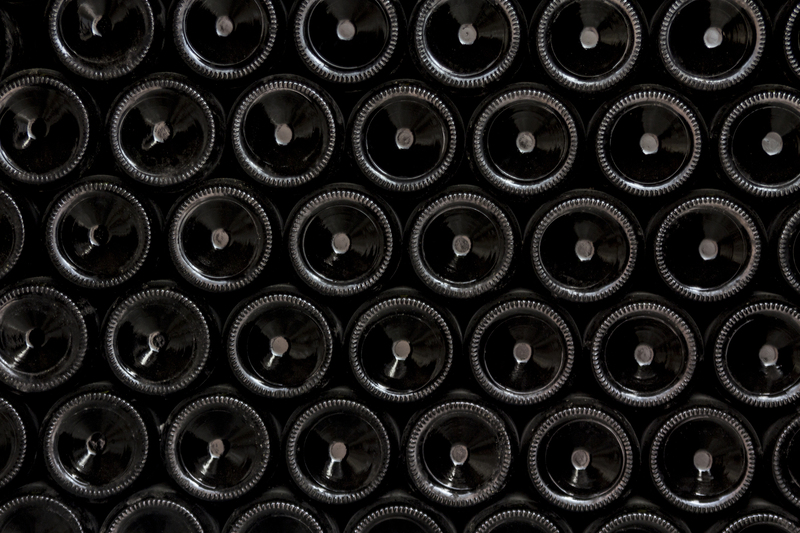Microplastic Challenges: Seeking a Clean Future
In recent decades, microplastics have emerged as a complex and persistent environmental issue. These tiny particles, often invisible to the naked eye, are now detected in oceans, rivers, soils, and even the air we breathe. The challenges posed by microplastics extend beyond pollution, having serious implications for ecosystems, human health, and the global drive for sustainable development. In this comprehensive article, we delve into the many facets of the microplastic problem, exploring sources, impacts, and most importantly, the path forward toward a cleaner, microplastic-free future.

Understanding Microplastics: An Overview
Microplastics are broadly defined as plastic fragments smaller than 5 millimeters in diameter. Unlike larger debris such as plastic bottles and bags, microplastics are often nearly impossible to collect and remove once dispersed into the environment. Understanding their formation and distribution is essential for tackling the challenge they present.
How Microplastics Are Created and Distributed
- Primary Microplastics: These are intentionally manufactured small plastics, like microbeads found in cosmetics and personal care products, or in industrial abrasives.
- Secondary Microplastics: Formed when larger plastic debris breaks down through exposure to sunlight, wind, and wave action.
Once generated, microplastics infiltrate virtually every environment, crossing boundaries and becoming a truly global issue. Key pathways include:
- Runoff from urban and agricultural land
- Wastewater discharge, including treated sewage
- Atmospheric transport--carried by wind and settling far from their origin
- Direct dumping and littering
Where Are Microplastics Found?
Scientists have detected microplastic pollution almost everywhere:
- Marine and freshwater ecosystems
- Soils, especially agricultural land where sewage sludge is used as fertilizer
- Drinking water--both bottled and tap
- Airborne dust in urban and even remote environments
The pervasiveness of microplastic contaminants makes them especially challenging to manage.
The Environmental Impact of Microplastics
Microplastics wreak havoc within ecosystems due to their size, persistence, and ability to accumulate toxins.
Effects on Marine Life
Fish, shellfish, and marine mammals accidentally ingest microplastics, mistaking them for food or simply absorbing them through gills and filtering mechanisms. This has a range of consequences, including:
- Physical damage and digestive blockages
- Reduced growth and reproductive success
- Bioaccumulation of toxic chemicals--microplastics often act as carriers for dangerous pollutants such as PCBs, pesticides, and heavy metals
These effects ripple up the food chain, potentially impacting the seafood humans consume.
Impacts on Terrestrial and Freshwater Systems
While marine microplastic contamination is better known, land-based ecosystems are equally at risk. Soils accumulate microplastics from sewage sludge, litter, and even atmospheric fallout. Studies suggest that:
- Soil organisms--such as earthworms--can ingest microplastics, altering their health and behavior
- Plant root systems may be affected by microplastic presence, with uncertain consequences for crop production
- Stormwater carries particles from streets to rivers, compounding freshwater contamination
Airborne Microplastics: A New Concern
Recent research has identified microplastics in atmospheric dust--even within remote mountain regions and the Arctic. These airborne particles:
- Pose inhalation risks to humans and animals
- Settle in water and on land, contributing to ongoing contamination cycles
The reach of microplastic pollution now extends above, below, and across every part of Earth's environment.
Microplastics and Human Health: An Emerging Threat
As scientific understanding deepens, concerns about how microplastics impact human health are intensifying.
How Do Humans Ingest Microplastics?
People are exposed to microplastics through several routes, including:
- Eating contaminated seafood, particularly filter-feeding shellfish
- Drinking water--studies show microplastics in both bottled and tap supplies
- Inhalation of airborne fibers and dust
- Consumption of processed and packaged foods
What Are the Health Risks?
While research is ongoing, potential health impacts include:
- Inflammation and cellular damage caused by plastic particles
- The risk of toxic chemical transfer, as microplastics can carry harmful additives and absorbed pollutants
- Unknown long-term effects--especially concerning for children and vulnerable populations
Current evidence is still limited, but the precautionary principle--avoiding exposure as much as possible until more is known--is being widely advocated.
The Scale of the Microplastic Challenge
The sheer scale of microplastic pollution is staggering:
- An estimated 8 million metric tons of plastic waste enter the oceans annually
- Microplastics have been found in the deepest ocean trenches and the highest mountain peaks
- Every person on Earth is likely exposed through ingestion, inhalation, or both
With plastic production and consumption still rising, microplastic contamination is poised to increase unless meaningful action is taken.
Current Efforts and Strategies for Microplastic Reduction
Addressing microplastic pollution requires a combination of policy, innovation, and public engagement.
International Policy Approaches
- Bans on microbeads in cosmetics and personal care products, enacted in the US, EU, and several other countries
- Ongoing negotiations for a global treaty to address plastic and microplastic contamination
- Policies targeting single-use plastics and plastic waste management
Policy measures are essential, but enforcement and global coordination remain ongoing challenges.
Innovations in Plastic and Waste Management
- Development of biodegradable plastics and plant-based alternatives
- Improved recycling processes to reduce plastic waste leakage
- Enhanced wastewater treatment technologies to capture microplastics before they enter waterways
- Microplastic filters for washing machines to reduce fiber release from synthetic textiles
Research and Monitoring
- Advanced techniques to detect, quantify, and trace microplastics in diverse environments
- Studying the fate and transport of microplastics to inform management strategies
- Community-based citizen science efforts to map microplastic presence and raise awareness
The Roadblocks: Why Is Solving the Microplastic Problem So Hard?
Multiple obstacles impede the eradication of microplastic pollution:
- Detection difficulty: Microplastics are numerous, small, and often invisible without specialized equipment.
- Complex sources: Many everyday products shed microplastics, from synthetic clothing to tires.
- Fragmentation: Once in the environment, plastics break down into smaller and smaller pieces.
- Lack of standardized measurement methods, hindering accurate global assessments.
Addressing these challenges demands cross-sector collaboration and the development of new technologies.
Building Toward a Clean Microplastic-Free Future
The Role of Consumers
- Choose natural fiber clothing and reduce reliance on synthetics
- Support products and brands that avoid unnecessary plastic packaging
- Participate in local clean-up initiatives to remove plastic litter before it fragments
- Advocate for better policies and industry practices
Consumer awareness and action are crucial drivers in reducing plastic use and demand.
Industry Responsibility
- Design for durability, reusability, and easier recycling
- Shift to non-plastic or biodegradable materials where possible
- Invest in research and infrastructure for improved waste capture and management
The transition to a circular economy--where waste is minimized and materials are reused--offers a promising path forward.
The Importance of Effective Policy
- Enforcing bans and restrictions on single-use plastics and microplastics in products
- Establishing strict requirements for wastewater treatment and stormwater management
- Funding scientific research and innovation
- Promoting international agreements to ensure global consistency
Policymakers must navigate the balance between environmental protection, economic interests, and global equity.

Future Innovations: Can Science Solve the Microplastic Crisis?
Hope for a cleaner future lies in ongoing scientific advances and societal commitment. Some promising areas include:
- Biological solutions, such as engineered microbes capable of breaking down plastics
- Novel filtration and separation technologies for water and wastewater treatment
- Continuous improvement in biodegradable and compostable material design
- Remote sensing and AI-driven methods for large-scale tracking of microplastic distribution
Continued investment in research will be essential as the world seeks sustainable, practical solutions.
Conclusion: Seeking a Clean Future Beyond Microplastics
The challenge of microplastic pollution is a profound and urgent environmental issue that transcends borders and disciplines. Its complex nature--encompassing everything from product design to global trade--means that solutions will need to be equally multifaceted. By addressing sources, transforming industry practices, strengthening policies, and driving innovation, society can move toward a future where microplastics no longer threaten the health of our planet or its inhabitants.
Only through collective action, strong governance, and scientific ingenuity can we hope to create the clean, microplastic-free future that this and future generations deserve.